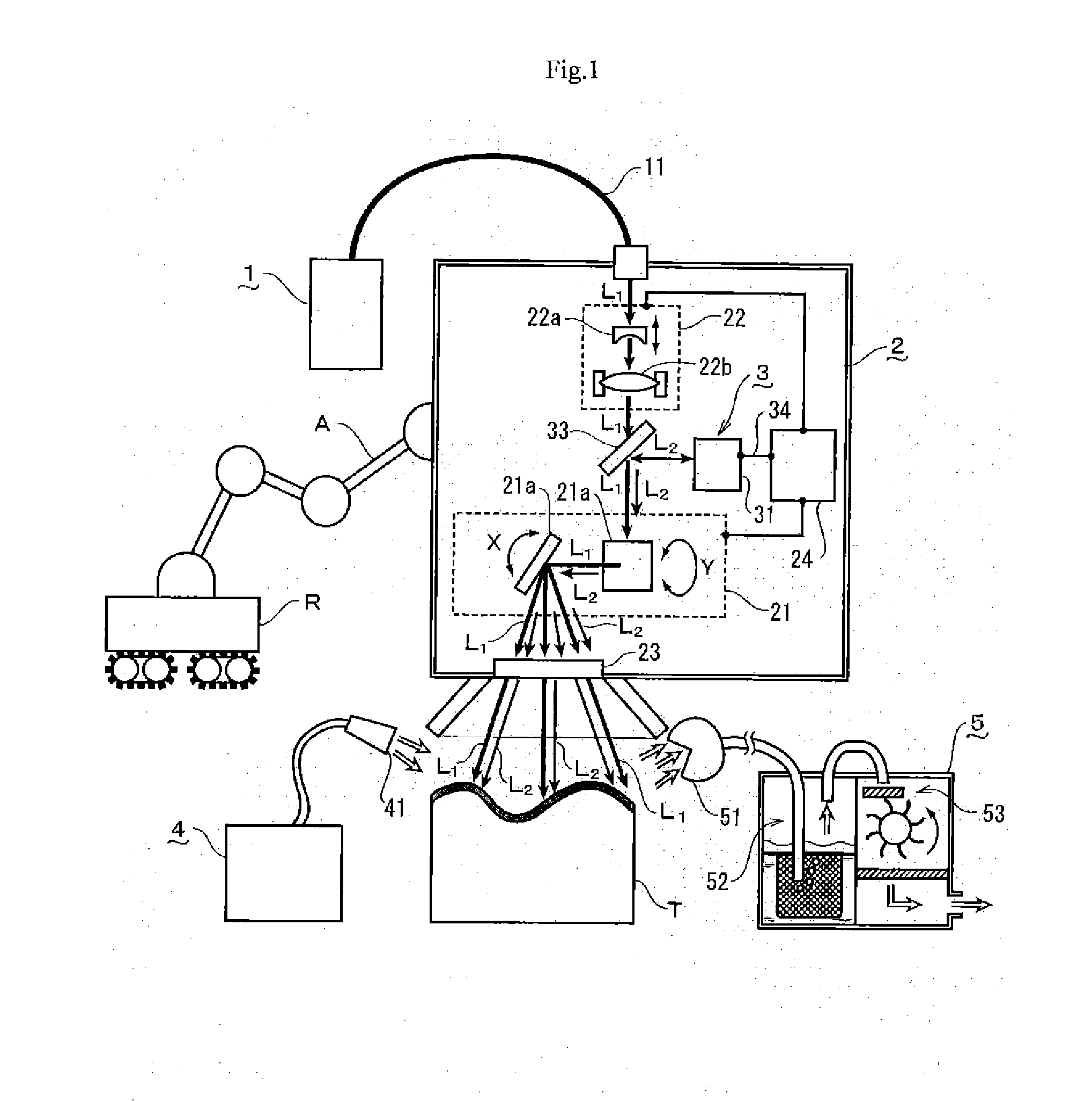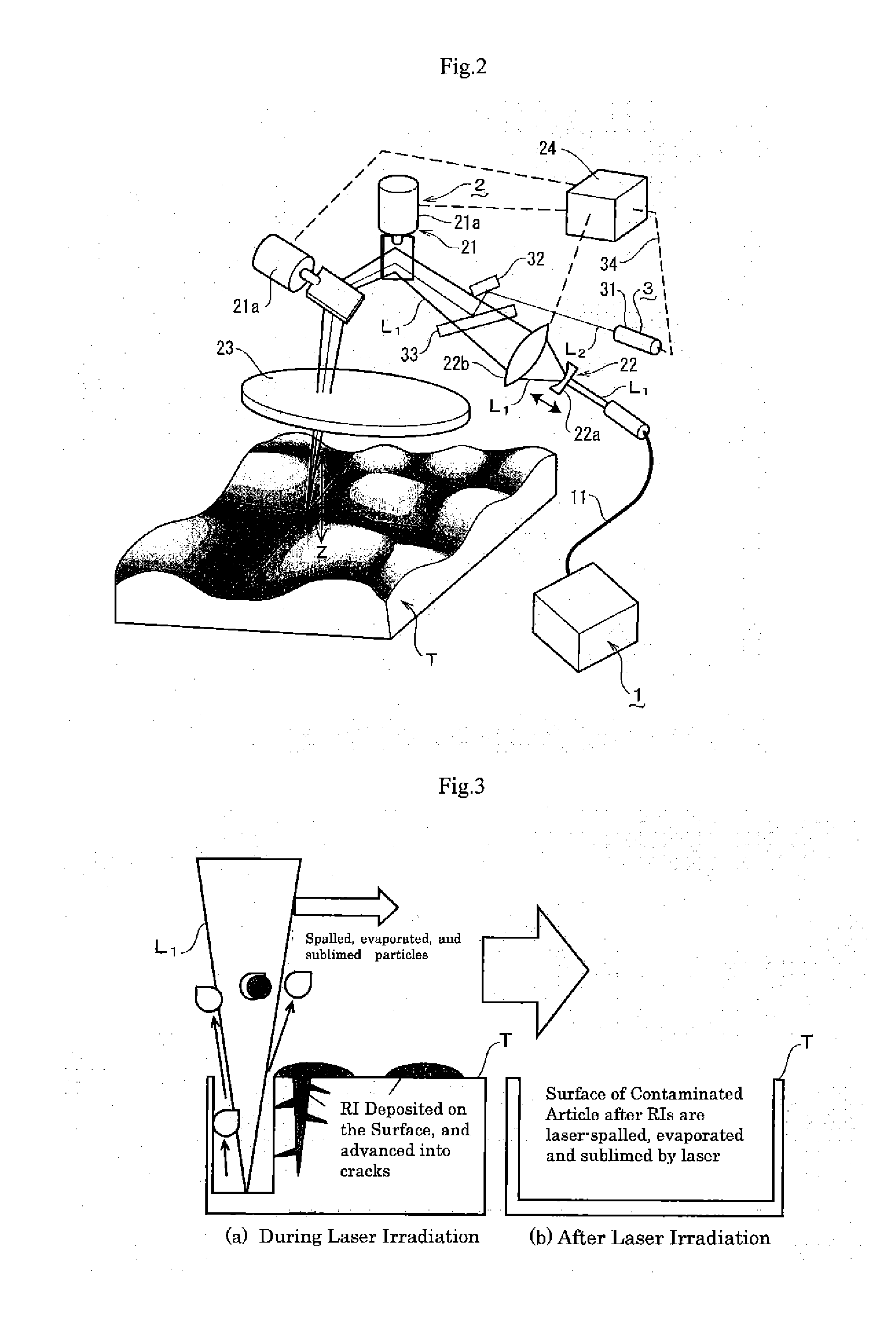Laser decontamination device
a laser and decontamination technology, applied in radioactive decontamination, nuclear engineering, manufacturing tools, etc., can solve the problems of grinding devices such as the nozzle of sandblasts, unable to remove ris advanced deep into the microscopic cracks on the metallic surface at all, and the power density to be lowered, so as to achieve accurate measurement, time and labor-saving decontamination, the effect of further enhancing the scanning velocity of the laser beam
- Summary
- Abstract
- Description
- Claims
- Application Information
AI Technical Summary
Benefits of technology
Problems solved by technology
Method used
Image
Examples
first embodiment
[0038]The first embodiment of the invention is explained with reference to FIGS. 1 to 4, in which the laser oscillator 1, the scanning device 2, the surface shape measuring device 3, the gas jet-spraying device 4 and the removals collecting device 5 are illustrated.
(Arrangement of the Laser Decontamination Device)
[0039]According to the first embodiment, the laser oscillator 1 that is the light source of a machining laser beam L1 is connected through a long optical fiber 11 to the scanning device 2 that condenses the laser beam L1 onto the surface of a contaminated article T for scanning. To note, the fiber laser provided with the optical fiber 11 smaller in diameter is used for the laser oscillator 1.
[0040]Further, in the present embodiment, in order to further enhance the power density of the laser beam L1, not the pulse laser, but the CW laser by which a focused beam size can be minimized is adopted for the laser oscillator 1. Further, the CW laser costs lower than the pulse laser...
PUM
| Property | Measurement | Unit |
|---|---|---|
| diameter | aaaaa | aaaaa |
| scanning velocity | aaaaa | aaaaa |
| thickness | aaaaa | aaaaa |
Abstract
Description
Claims
Application Information
 Login to View More
Login to View More - R&D
- Intellectual Property
- Life Sciences
- Materials
- Tech Scout
- Unparalleled Data Quality
- Higher Quality Content
- 60% Fewer Hallucinations
Browse by: Latest US Patents, China's latest patents, Technical Efficacy Thesaurus, Application Domain, Technology Topic, Popular Technical Reports.
© 2025 PatSnap. All rights reserved.Legal|Privacy policy|Modern Slavery Act Transparency Statement|Sitemap|About US| Contact US: help@patsnap.com



